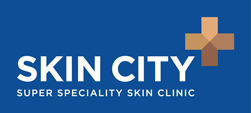
A common question that people with vitiligo ask is whether their diet makes any difference to their skin condition.
Current research suggests that changing the food you eat is not going to cure your vitiligo. However, this may well help if you are not eating a healthy, varied, balanced diet at the moment. You need to eat plenty of fruit and vegetables (at least five servings per day), as well as a variety of starchy foods and proteins. Try to cut down on fatty, rich foods and processed foods, which have fewer nutrients. A healthy diet, including drinking plenty of water, is good for you generally, not just your skin!
Such a diet is needed to give you a good supply of the nutrients which promote healthy skin and are involved in the pigmentation process:
- Vitamin B12 and Folic Acid
- Vitamin C
- Vitamin D
- Beta carotene
- Minerals (copper, iron and zinc)
Frankly speaking, there’s no scientific evidence to prove that the foods below are bad for a vitiligo patient. However, some people have reported that their condition worsened while on them, so it’s better to avoid or at least cut down on the following foods.
To know further read Everything You Need to Know About Vitiligo
Foods To Avoid When You Have Vitiligo
Vitiligo patients should avoid the following types of food to avoid aggravating the symptoms of this condition:
1. Gluten
This component found in wheat has been closely linked to inflammation, which can trigger the immune system to become active and start attacking your melanocytes. Studies suggest that vitiligo patients with celiac disease showed dramatic improvement once they employed a gluten-free diet, with vitiligo patches eventually re-pigmenting or improving through time.
2. Sugar
Sugar is another ingredient that promotes inflammation. Too much sugar in the system may trigger a severe autoimmune response, which may worsen vitiligo symptoms.
3. GE (GMO) foods
Foods from genetically engineered plants (sometimes referred to as genetically modified organisms or GMOs) have been widely criticized throughout the market because of the negative effects they have on the human body. Vitiligo patients could also worsen their condition because of the chemical components that come with the production of these plants, including pesticides and insecticides.
4. Spices and Artificial Food Colors
Avoid artificial colors added during food preparations, as well as spices (especially turmeric), as they might make your condition worse.
5. Fruits Containing Hydroquinone
You may already be aware of hydroquinone, the main depigmenting agent in skin bleaching creams. Well, hydroquinone is also found in certain fruits, such as pears and blueberries. Since hydroquinone, reduces melanin production, taking these fruits could make your white patches even whiter.
6. Excessively Sour Foods
Fruits like lemons, limes and others that are excessively sour can make this disorder worse. Besides, they contain ascorbic acid which lightens the skin, so eating them might worsen your vitiligo.
7. Non-Vegetable Foods
Lastly, cut down on non-vegetable foods like fish, red meat, dairy products and all the high-calorie fatty and sugary foods. Why? Because some bodies misread them as foreign bodies and fight them, causing adverse reactions including vitiligo.
Is There Proof That A Vitiligo Diet Can Work?
According to some research, yes. The study is that diet, along with vitamin and mineral supplements, and lifestyle modifications may indeed hep.
However, current research suggests that changing the food you eat is not going to cure your vitiligo. Despite the naysaying, the society says that foods rich in vitamins B12, folic acid (vitamin B9), non-citrus sources of vitamin C, vitamin D, beta carotene (a precursor to vitamin A) and certain minerals such as copper, iron and zinc can help manage vitiligo.
Another study shows that supplementing with vitamins A, C, E, along with the minerals zinc and selenium eased symptoms of vitiligo. The researchers of the study conclude antioxidant supplementation is significantly beneficial to cure vitiligo.
Vitiligo Treatment In Pune
Skin City is the largest institution that treats Vitiligo with lasers. The first Excimer lasers, XTRAC & VTRAC were launched by Skin City a decade ago. Skin City has also done research on Cyanoacrylate Lamination technique for skin grafting in Vitiligo.
Several surgical procedures like Miniature punch grafting, or MPG, Suction blister grafting and MCS or Melanocyte cell suspension are successfully carried out at Skin City regularly.
In some cases, Micropigmentation or skin tattooing can be done when other options are contraindicated. If the hair on the eyebrow or scalp and in the case of men, facial hair is affected, then hair transplantation can be considered.
Takeaway
Autoimmune diseases like Vitiligo can be notoriously frustrating. But a healthy diet and medical treatments can be a powerful tool in fighting back against illness and helping your body heal. However, with vitiligo, it is still possible to live a normal, healthy and productive life with it. Start by eating the right foods indicated above to help you cope with the condition better.
So, let yourself heal with Skin City.
